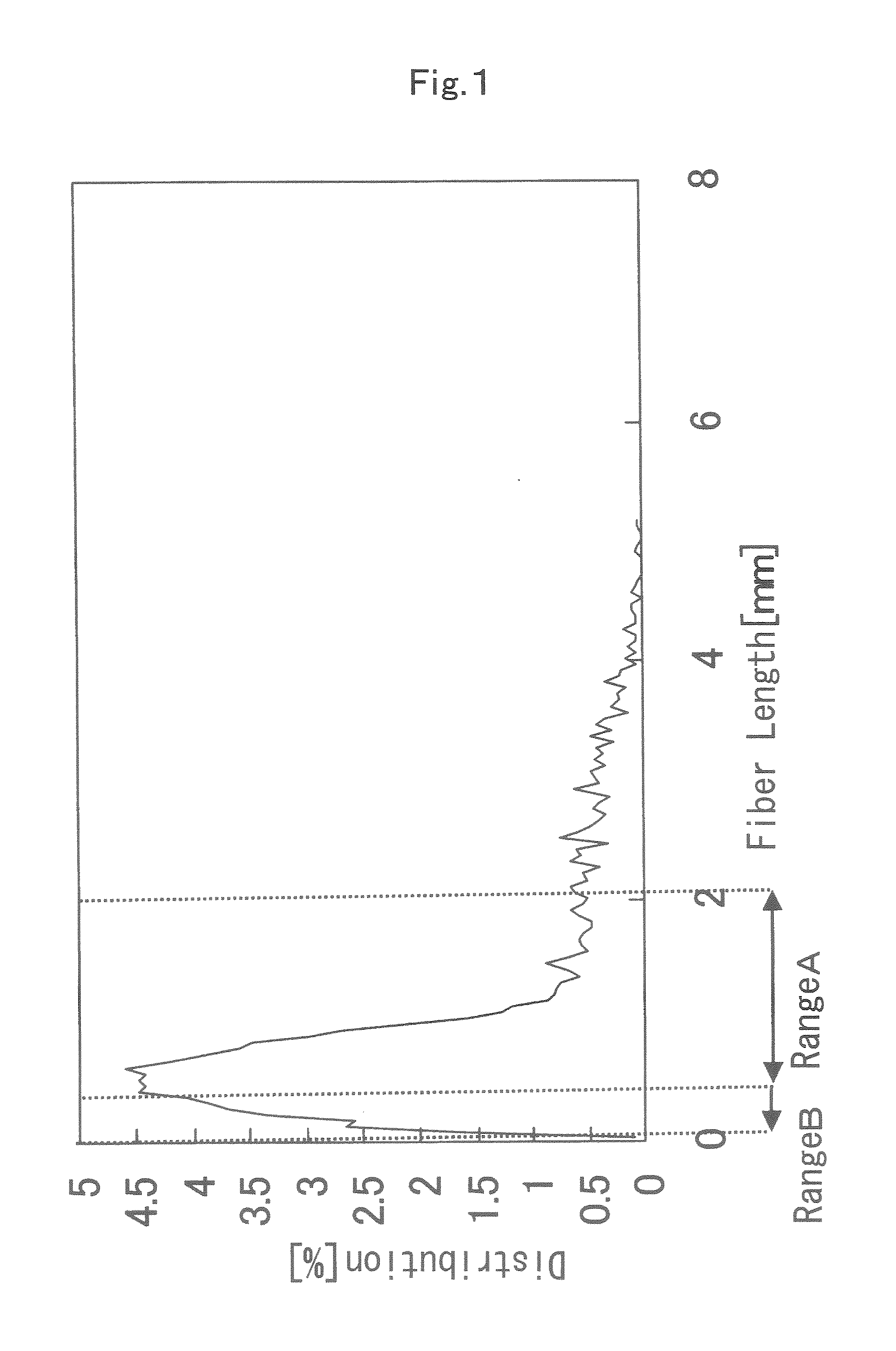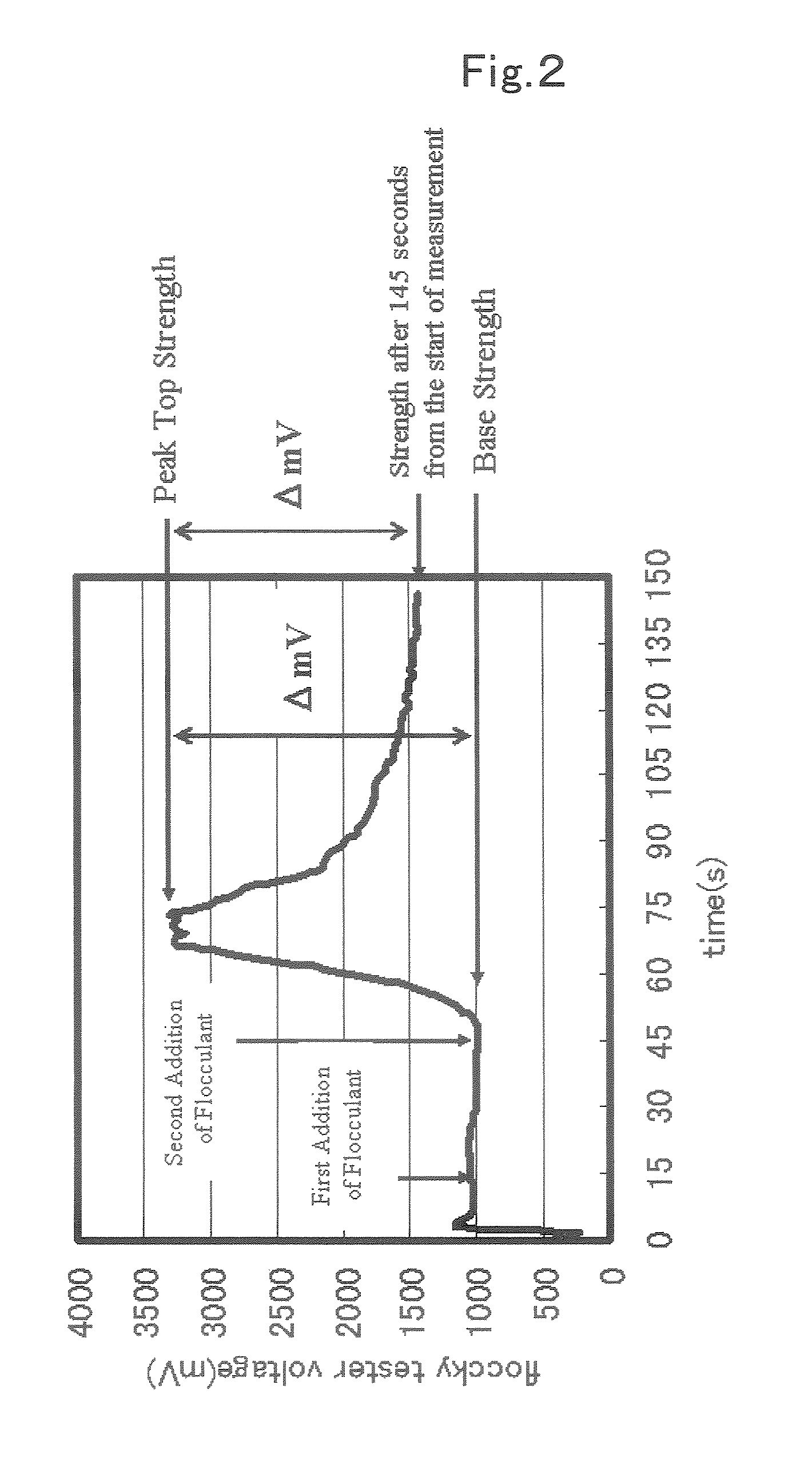Article Formed Into Sheet, Method for Producing the Same and Exothermic Formed Article
a technology of exothermic formation and article, which is applied in the field of molded article, can solve the problems of poor fixability of fibrous materials when converted into sheet form, failure to obtain a heat-generating element having increased the contents of iron powder and activated carbon, and poor retention
- Summary
- Abstract
- Description
- Claims
- Application Information
AI Technical Summary
Benefits of technology
Problems solved by technology
Method used
Image
Examples
example 1
(1) Formulation of Slurry Composition
[0079]Fibrous material: pulp fiber NBKP (Mackenzie (trade name) from Fletcher Challenge Canada, Ltd., CSF: 500 ml; amount of charge: −3.14×10−6 eq / g) 15 wt %[0080]Oxidizable metal: iron powder (RKH (trade name) from Dowa Iron Powder Co., Ltd. 75 wt %[0081]Moisture retaining agent: activated carbon (Carboraffin (trade name) from Japan EnbioChemicals, Ltd.) 10 wt %[0082]Flocculant: per 100 parts by weight of the solids content of a slur composition, i.e., the above-recited fibrous material, oxidizable metal, and moisture retaining agent)[0083]Cationic flocculant: polyamide-epichlorohydrin resin (WS4020 (trade name) from Seiko PMC Corp) 0.5 parts[0084]Anionic flocculant: sodium carboxymethyl cellulose (HE1500F (trade name) from Dai-ichi Kogyo Seiyaku Co., Ltd.; degree of etherification: 1.45; viscosity: 2500 to 3500 mPa·s) 0.18 parts[0085]Water: industrial water to result in a solid concentration of 3 wt %.
[0086]To water were added and dispersed the...
example 2
[0093]A molded article was prepared in the same manner as in Example 1, except for using pulp fiber having a CSF of 150 ml and a charge quantity of −3.66×10−6 eq / g. A heat-generating molded article was obtained in the same manner as in Example 1.
example 3
[0094]A molded article was obtained in the same manner as in Example 1, except for using pulp fiber having a CSF of 65 ml and a charge quantity of −4.38×10−6 eq / g. A heat-generating molded article was obtained in the same manner as in Example 1.
PUM
| Property | Measurement | Unit |
|---|---|---|
| length | aaaaa | aaaaa |
| length | aaaaa | aaaaa |
| length | aaaaa | aaaaa |
Abstract
Description
Claims
Application Information
 Login to View More
Login to View More - R&D
- Intellectual Property
- Life Sciences
- Materials
- Tech Scout
- Unparalleled Data Quality
- Higher Quality Content
- 60% Fewer Hallucinations
Browse by: Latest US Patents, China's latest patents, Technical Efficacy Thesaurus, Application Domain, Technology Topic, Popular Technical Reports.
© 2025 PatSnap. All rights reserved.Legal|Privacy policy|Modern Slavery Act Transparency Statement|Sitemap|About US| Contact US: help@patsnap.com


